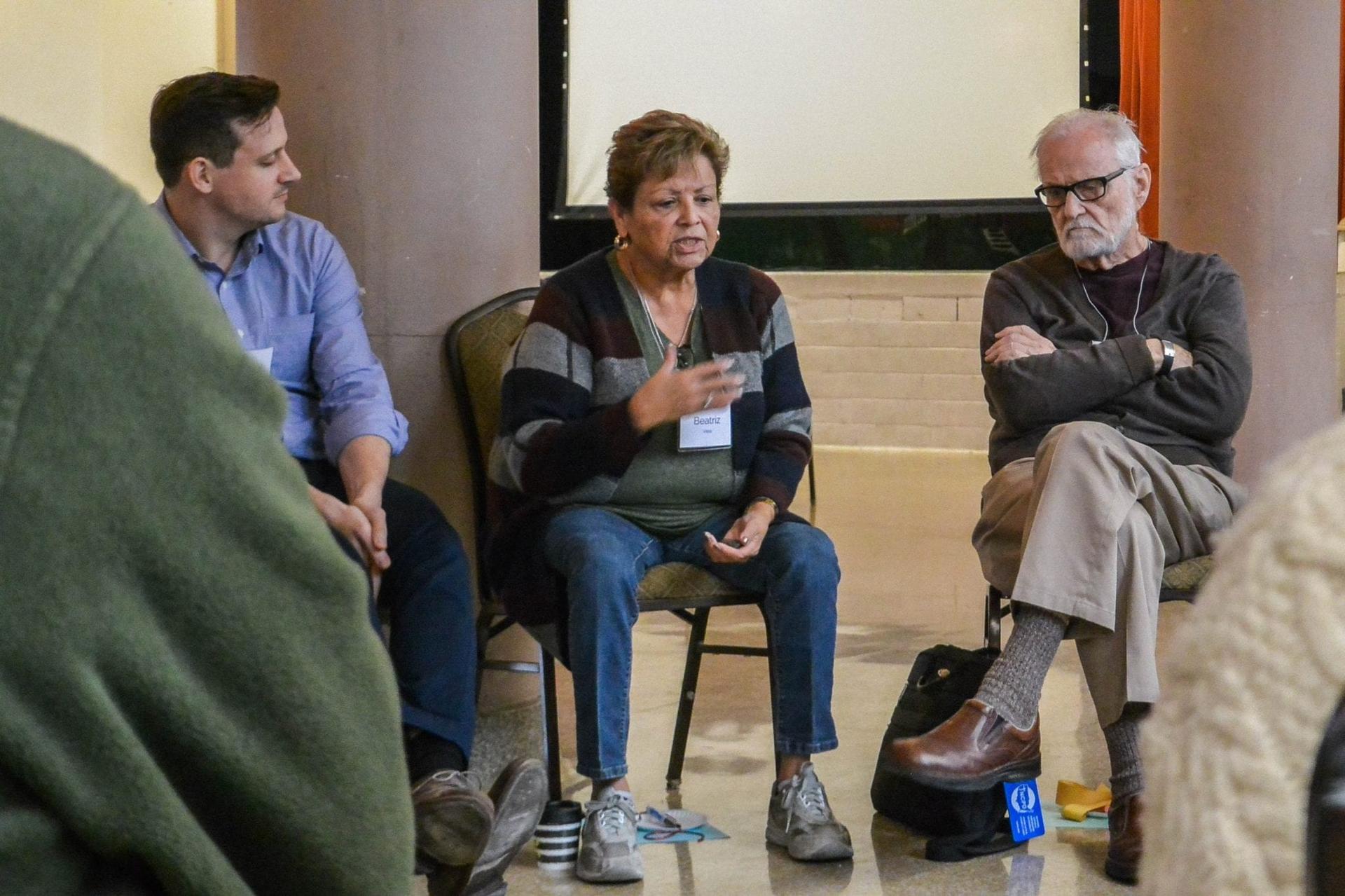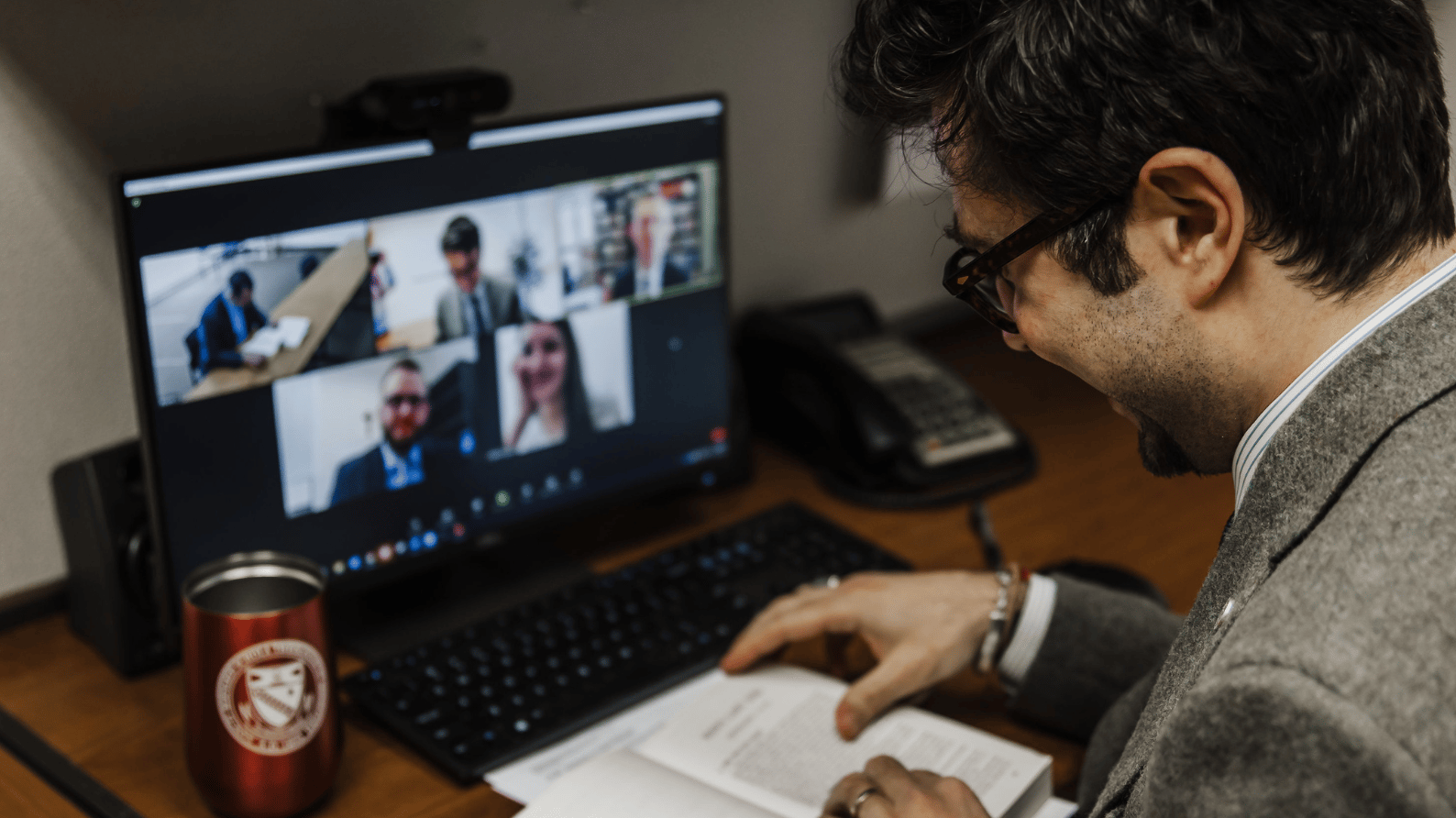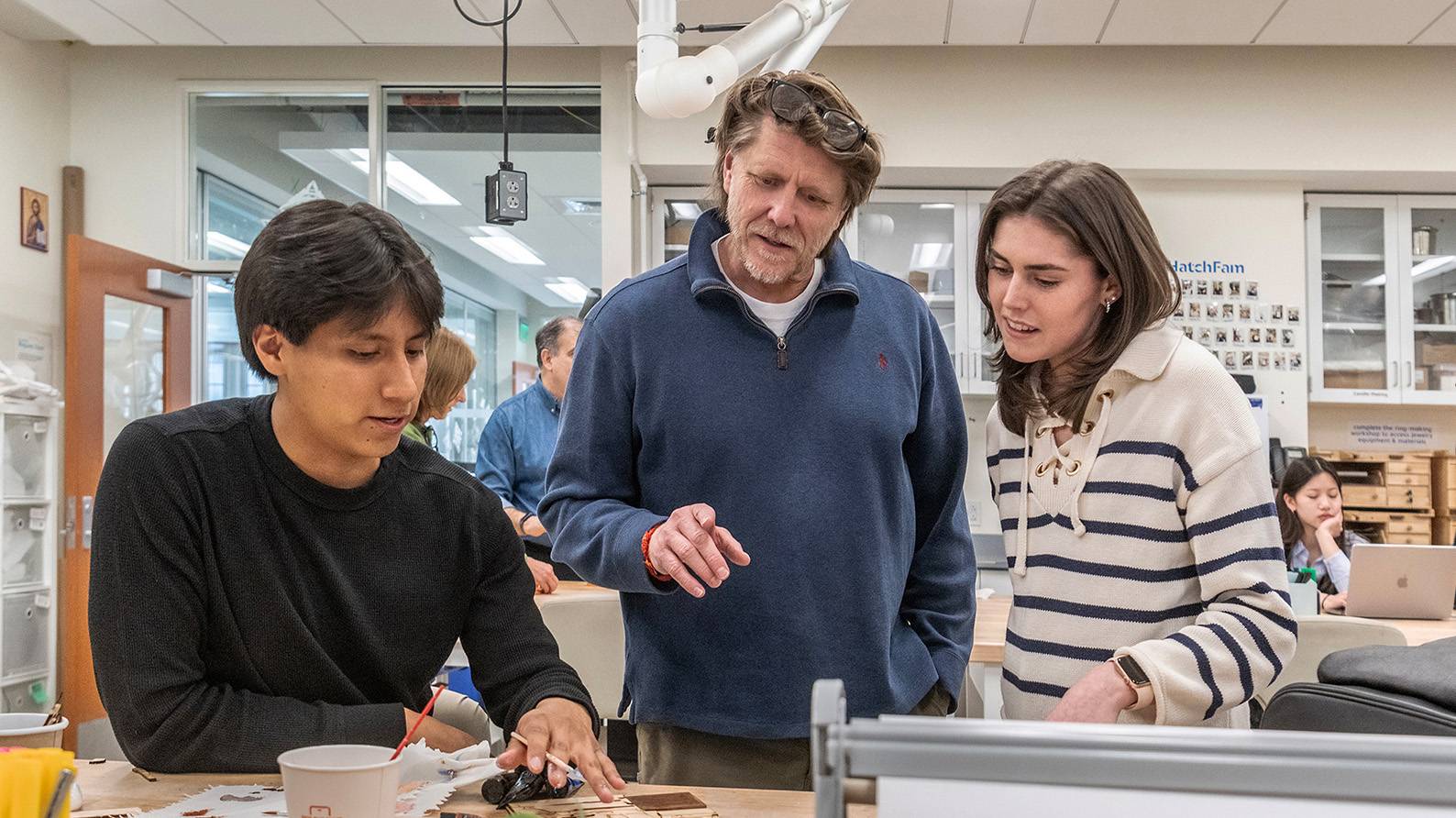The U.S. criminal legal system wants us to believe that justice is achieved through punishment alone, and often by the harshest means possible. But this is simply not the case. The U.S. Bishops’ recent pastoral letter against racism Open Wide Our Hearts: The Enduring Call to Love, reminds us that justice, as God intends it, is realized when “we are in right relationship with God, with one another, and with the rest of God’s creation.”
So, how do we achieve this authentic justice when harm and crime occur — instances where human dignity is violated and relationships are broken? One increasingly sought-after response, including in Catholic circles, is the implementation of restorative justice.
So what is restorative justice, anyway? And beyond that, what does it have to do with being Catholic?
What may seem like an overwhelming topic is made easily accessible in a new faith formation guide from Catholic Mobilizing Network (CMN), the national Catholic organization working to end the death penalty and promote restorative justice. Published earlier this year by Liturgical Press, Harm, Healing and Human Dignity: A Catholic Encounter with Restorative Justice invites readers to explore the principles and practices of restorative justice and consider ways to address crime and harm that model Jesus’ reconciling way.
The book challenges us to take a closer look at our criminal legal system here in the U.S., which espouses that in order to deter violence, the only course of action is to punish those who are deemed guilty through incarceration and sometimes even the horrific use of the death penalty.
Meanwhile, the cries of individuals and communities most closely impacted by violence are often unheard or outright silenced, and prison environments further dehumanize those who endure them. At times it seems as though unjust policies and practices, as seen in the use of the death penalty, only perpetuate cycles of violence. As a result, God’s family is torn apart, deprived of opportunities to experience mercy, healing, and full participation in society.
While legal proceedings have a place and confinement is sometimes needed for community safety, this ethic of retribution is counter to our Catholic faith and, when perpetuated, seeps into our culture, institutions, and even our day-to-day relationships.
Kate and Deacon Andy Grosmaire recognized this contradiction in their own encounter with the U.S. criminal justice system. After their daughter Ann was killed by her fiance, Conor, on Good Friday 2010, Kate remembers that her husband “wanted answers that the traditional criminal justice system would likely not offer. Conor had been counseled not to talk about what happened. We were left to our imaginations. For me, I wanted to have a greater say in the sentencing. To have a smart able-bodied young man sit in a cell for 40 years was not justice in my mind.”
Moved by their Catholic faith to forgive Conor, the Grosmaires advocated for a restorative justice process to take place which would allow their voices, needs, and desires to be taken into account. Their advocacy resulted in a facilitated dialogue with Conor and his family — the first in the state of Florida to influence sentencing in a felony case.
Ultimately, Conor’s sentence required anger management classes and speaking publicly about teen dating violence. He began ministering to other inmates, teaching them about hope and forgiveness.
The term “restorative justice” is increasingly popping up in news articles, television shows, and local community initiatives. Though most often tied to themes of criminal justice, restorative practices are also increasingly being utilized in schools and ministry settings. Stories of these encounters often evoke themes of repair, healing, accountability, and work toward racial equity. Core to restorative practices are the possibility for hope and transformation — themes that ring familiar with Christian Gospel messages.
“The sacrament of Reconciliation is a personal experience of being reunited with God through the acknowledgment of our sins and our promise to try to sin no more,” says Kate Grosmaire.
“Restorative justice is a way for us to apply reconciliation on a community level. Rather than separating the offender, we acknowledge their place in the community and allow them the opportunity to make amends for the harm they have done.”
Through personal stories, reflection questions, prayers, and a companion online reader guide, Harm, Healing, and Human Dignity examines the social realities of our day and how restorative justice can offer a different, lifegiving way forward.
As Catholics, we uphold that every person is created in the image and likeness of God, and therefore has inalienable human dignity. This dignity is not only individual, but brought to fulfillment through the integral web of relationships in which we are all connected as Christ’s family.
May Harm, Healing, and Human Dignity move us into right relationship with one another, and toward a justice that models Christ’s reconciling way.
Caitlin Morneau is the Director of Restorative Justice for Catholic Mobilizing Network and the adaptor of Harm, Healing, and Human Dignity: A Catholic Encounter with Restorative Justice (Liturgical Press 2019). To learn more about Catholic Mobilizing Network’s work to end the death penalty and promote restorative justice, please visit catholicsmobilizing.org or follow along on social media (Facebook, Twitter, Instagram).















